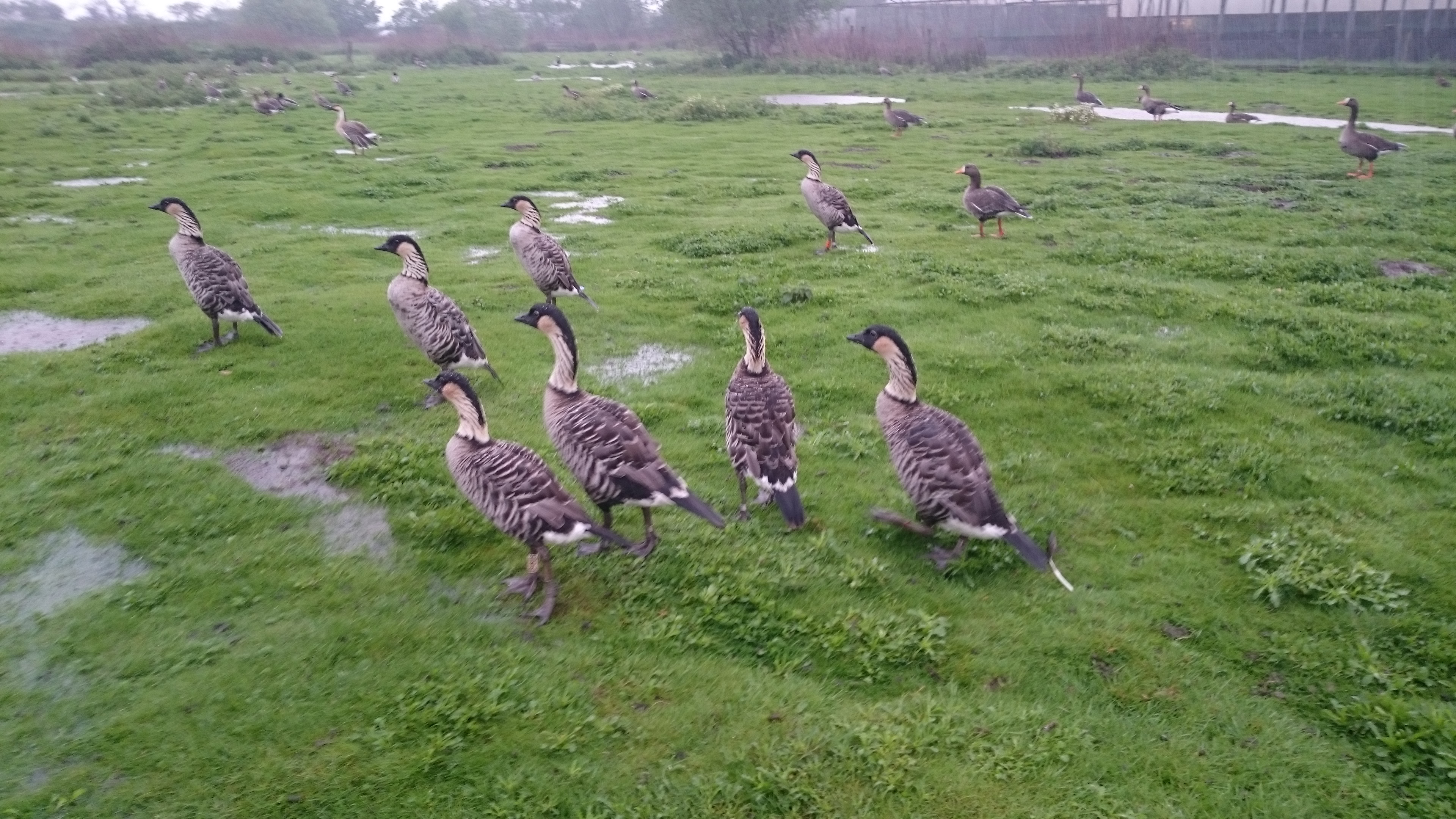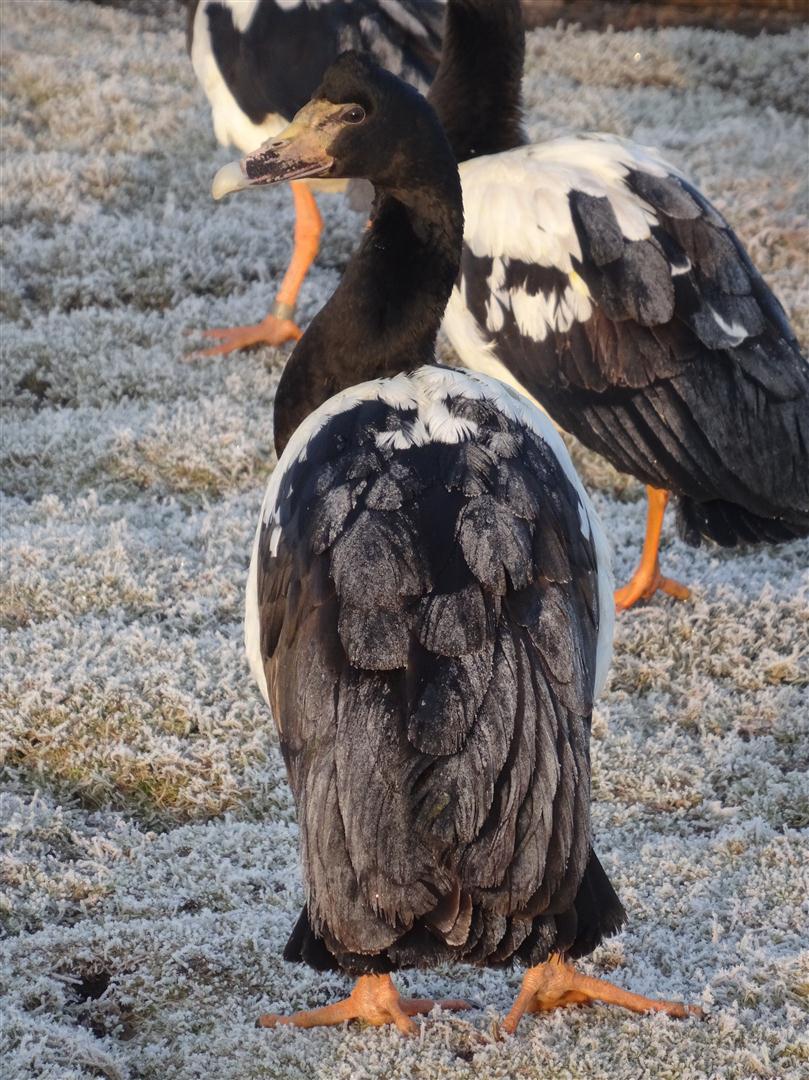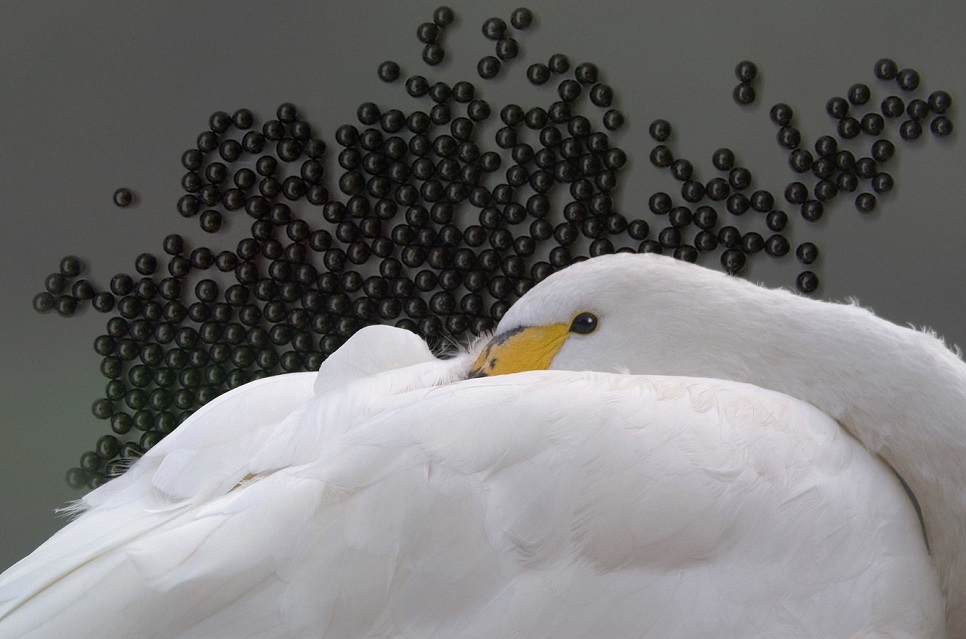Autumnal rain - not the weather for ducks!
There's a phrase bandied around at this time of year that us Aviculturists find tough, and that's "at least it's good weather for ducks!"
This phrase is often delivered with the sweetest of intentions, but the reality is, very few wildfowl species relish the idea of persistent rainfall. They love living by it and on it, but not in it.
Below is the epitome of handsome; a red breasted goose. This gorgeous girl is in perfect feather condition. She achieves this using her beak and her preening gland; a small mound at the base of her back. Here she generates a delicate oil which she preens through her feathers in order to tidy them and waterproof them. A well preened bird has the best chance of staying warm and snug, but in a heavy gale, even the best birds can't always keep dry. Water permeates through their feathers, persistent drips are the worst, and can leave them feeling chilly and miserable. As such you'll often note that birds will develop a "rain stance" or hunched position.

The Nene below have adopted the downpour position. They tend to look straight into the teeth of the wind, hunch their necks so their concertinaed feathers collapse, and stand as vertical as possible to achieve the best levels of run-off. They will even close their fanned tail feathers for maximum flow, and during the moult this stance is even more apparent. Post-rain they will take great care to keep their feathers knitted together so that their feathers dry in the optimum position. As a bird it takes far more time to keep oneself dry than we humans think!

The species that manage best tend to be the arctic migrants or Antarctic extremists, but the majority of southern hemisphere species are designed naturally to deal with warm rain. Warm rain is not readily available at Slimbridge despite our prime-time gulf stream south-westerly position, and so some of our tropical species need a little more love during the British winter. This week we have been busy providing straw for our Magpie geese. Snuggling down into a bed of straw at night can help insulate their skinny legs and toes against freezing temperatures. Magpie geese are not designed for frost, and neither are they designed for persistent rain. Their blunt beaks make delicate feather preening an impossibility, and so the species has evolved a rather hardcore preening oil which they can apply pretty thick! You will often see Magpie geese with big dollops of yellow showing on their white feathers, and these are clumps of un-distributed oil. As a result the species has quite a remarkable scent, which I would describe as being reminiscent of "citrus armpit." And so, despite their shortcomings, the majority of species have evolved simply to do their best.


